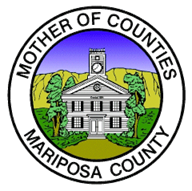Vegetation Management
Cal Fire VMP Training Burn for Invasive Species Control in Mariposa County
Cal Fire Vegetation Management Program
The Vegetation Management Program (VMP) is a cost-sharing program that focuses on the use of prescribed fire, and some mechanical means, for addressing wildland fire fuel hazards and other resource management issues on State Responsibility Area (SRA) lands. The use of prescribed fire mimics natural processes, restores fire to its historic role in wildland ecosystems, and provides significant fire hazard reduction benefits that enhance public and firefighter safety.
The Vegetation Management Program is derived from Senate Bill 1704, authored by then Senator Barry Keene, and ultimately signed by Governor Edmund G. Brown Jr. on July 16, 1980. The original legislation established the basic processes and procedures consistent with the need to manage chaparral-covered and associated lands within California. The laws enacted in support of this program are found in Title 14, California Code of Regulations, Chapter 9.8 Chaparral Management, Sections 1560 to 1569.6. The program is further defined in the Public Resources Code Sections 4461 to 4473, 4475 to 4480 and 4491 to 4494.
VMP allows private landowners to enter into a contract with CAL FIRE to use prescribed fire to accomplish a combination of fire protection and resource management goals. Implementation of VMP projects is by CAL FIRE Units. The projects which fit within a unit's priority areas (e.g., those identified through the Fire Plan) and are considered to be of most value to the unit are those that will be completed. The Vegetation Management Program has been in existence since 1982 and has averaged approximately 25,000 acres per year since its inception.
Landowners may choose to apply for participation in the Vegetation Management Program. The Unit VMP Coordinator will make the determination as to the suitability of a project for funding through the Vegetation Management Program. When approved as a VMP project, CAL FIRE assumes the liability for conducting the prescribed burn.
VMP Program Goals (Board of Forestry and Fire Protection)
The goal of the Vegetation Management Program is to reduce the chance of large, damaging wildfires by reducing fire hazards on wildland in California. The Departments' intent is to realize the best 'mix' of natural resource benefits from these lands, consistent with environmental protection and landowner/steward objectives. This includes three broad goals, which encompass most vegetation.
Management objectives:
- Reduction of conflagration fires.
- Optimization of soil and water productivity.
- Protection and improvement of intrinsic floral and faunal values.
Sub-Goals:
- Reduce the number and intensity of large, damaging wildfires with corresponding savings of suppression costs.
- Increase public safety.
- Increase water quantity and maintain water quality from managed watersheds.
- Decrease the potential for damage from flooding and siltation.
- Protect and improve soil productivity, and decrease erosion over the long term.
- Improve wildlife and fisheries habitat.
- Improve oak woodlands through fire management and regeneration.
- Establish and maintain desired plant communities.
- Propagate rare or endangered species of plants, which are fire dependent.
- Improve air quality over the long term.
- Improve forage and browse for livestock.
- Increase opportunities for recreation and improve scenic vistas.
- Decrease the risk to firefighters and other responders during wildland fires.
- Provide training opportunities for personnel in incident organization, operations, fire behavior, firing methods and effects of weather influences.
Fuels Treatment
The wildlands of California are naturally fire prone. Past land and fire management practices have had the effect of increasing the intensity, rate of spread, as well as the annual acreage burned on these lands. While most of the natural communities of plants and animals have adapted to natural fire conditions, these natural communities are now at risk from catastrophic wildfire primarily due to the hazardous fuel conditions. Also at risk are the communities that interface with these wildlands, including those within wildland-urban interface (WUI) and rural areas. Strategic management and control of wildland vegetation is essential to the safety, health, recreational, and economic wellbeing of California's citizens.
Hazardous fuels are live and dead vegetation that has accumulated and increases the likelihood of unusually large wildland fires. When fire encounters areas of heavy fuel loads (continuous brush, downed vegetation or small trees) it can burn these surface and ladder fuels and may quickly move from a ground fire into a crown fire.
Hazardous fuel reduction generally requires the reduction of surface and ladder fuels. It may also require thinning out dense tree stands, preserving mature sized trees. It can be accomplished using fire, biological methods, chemical and/or mechanical treatments to remove or modify fuels in wildland areas.
For years, managers have recognized the risks of damage to the environment, housing and infrastructure from wildland fire and have acted to reduce wildland hazardous fuels, by thinning, prescribed burning, and other vegetation treatments. Reducing fire intensity through vegetation management can substantially aid in wildland fire containment and control, while creating safety zones for fire fighter and citizen safety.
Fuel treatments are intended to lower the risk of catastrophic wildfires by managing vegetation to modify/reduce hazardous fuels. The goal of fuel treatment projects is to modify fire behavior to reduce environmental damage and aid in suppressing wildfires. Benefits from fuel treatments include; prevent loss of lives, reduce fire suppression cost, reduce private property losses and protect natural resources (control of unwanted vegetation, including invasive species, improvement of rangeland for livestock grazing, improvement of fish and wildlife habitat, enhancement and protection of riparian areas and wetlands, and improvement of water quality) from devastating wildfire.
CAL FIRE funds and carries out various types of wildland fuels treatments, for the purpose of reducing fire hazard or severity, through a number of programs. Programmatic environmental documents provide the CEQA disclosure and analysis for fuels projects carried out under the Vegetation Management Program and California Forest Improvement Program. Fuels treatments that are out of the scope of the analysis of these CEQA documents require additional environmental analysis and documentation.
Links to CAL FIRE's fuel treatment programs are provided below:



